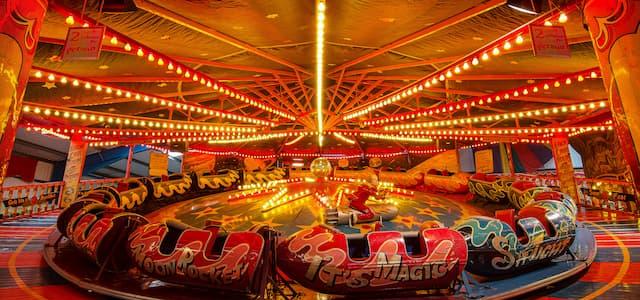
National Portrait gallery acquires tudor double portrait - a gem of matriarchal power
The National Portrait Gallery acquires one of the few Tudor family portraits on public view, a masterpiece by Hans Eworth, the most talented painter working in England after Holbein.

The National Portrait Gallery has acquired Hans Eworth’s Lady Dacre, and her son, Gregory Baron Dacre, described as 'one of the finest works to be painted in Britain in the mid-16th century’.
The outstanding portrait has been acquired for the Gallery for £997,500 following a generous contribution of £377,500 from the National Heritage Memorial Fund, and the largest grant to date of £200,000 from the Gallery's Portrait Fund. The public appeal was kick started in July with a gift of £300,000 from The Art Fund, the UK’s leading independent art charity, and has benefited from the support of other generous Gallery patrons.
Painted in 1559, the portrait is widely acknowledged as one of the great gems of Tudor portraiture, a masterpiece by Hans Eworth, the most talented painter working in England following the death of Hans Holbein. For an early panel, it is in immaculate condition, being made of a single piece of English oak.
The sitters were important members of the nobility with close links to court and the seat of power in Tudor England. Mary Neville, Lady Dacre was the widow of Thomas, 9th Baron Dacre, who had been executed in 1541 and whose titles and honours were forfeited. While Lady Dacre married twice subsequently, she continued to campaign for the restoration of honours to her son. Gregory and his sister had their titles restored by Parliament in 1558, and he became 10th Baron Dacre. This telling portrait celebrates this change in their family fortunes and shows Mary as a powerful and formidable woman at the age of around 36 alongside her son Gregory aged around 21.
Unusually for a woman, Mary is placed on the left side of the pairing, a position traditionally reserved for male authority. The position may reflect her strength of character and power in the family and contemporary accounts indicate that Gregory was dominated both by his mother and later by his wife Anne Sackville.
The portrait, once owned by the great 18th-century collector, Horace Walpole, at Strawberry Hill, has been on loan to the Gallery since 1984. Now on display in the Tudor Galleries, as one of the few family portraits on view, it plays an essential part in understanding the Elizabethan period.
The portrait has been the subject of extensive research and technical analysis at the National Portrait Gallery, as part of a project to explore the working practices of Tudor artists. For further details please see http://www.npg.org.uk/live/makingtudor3hanseworth.asp
Sandy Nairne, Director of the National Portrait Gallery, London, says: "‘This powerful painting is unique as one of the earliest surviving double family portraits painted in England and is a remarkable depiction of matriarchal power. It is a great acquisition for the nation."
Carole Souter, Head of the National Heritage Memorial Fund, says: "Lady Dacre’s life reads like an historical novel with a twist – a common tale of murder, plague, hanging and multiple marriages with this formidable lady bullying Henry VIII into doing what she wanted. The National Heritage Memorial Fund is proud to have helped ensure this remarkable woman's family portrait continues to hang alongside more familiar Tudor faces."
David Barrie, Director of The Art Fund, the UK’s leading independent art charity, says: "Commissioning this exceptional portrait was a show of victory by the tenacious Lady Dacre to celebrate her successful battle to rejoin the ranks of the nobility. A fascinating insight into the drama and intrigue of High Tudor society, Hans Eworth’s portrait leaves you in no doubt that Lady Dacre was a powerful and dominant matriarch. It is right that this outstanding painting, one of the best examples of portraiture from the time, is now a permanent jewel in the Gallery’s collection."
Notes to editors
Mary Nevill, Lady Dacre and her son, Gregory, Baron Dacre
by Hans Eworth, 1559
three-quarter length portrait
oil on panel
500 x 714 (19 3/4 x 28 1/8”)
The Art Fund
The Art Fund is the UK’s leading independent art charity. It offers grants to help UK museums and galleries enrich their collections; campaigns on behalf of museums and their visitors; and promotes the enjoyment of art. It is entirely funded from public donations and has 80,000 members. Since 1903 the charity has helped museums and galleries all over the UK secure 860,000 works of art for their collections. Recent achievements include: helping secure Anthony d’Offay’s collection, ARTIST ROOMS, for Tate and National Galleries of Scotland in February 2008 with a grant of £1million; putting together a unique funding package to ensure Dumfries House in Ayrshire and its contents were secured intact for the nation in July 2007; and running the ‘Buy a Brushstroke’ public appeal which raised over £550,000 to keep Turner’s Blue Rigi watercolour in the UK.
Further information
National Portrait Gallery,
St Martin’s Place, WC2H 0HE
Opening hours: Saturday-Wednesday: 10am – 6pm (Gallery closure commences at 5.50pm)
Late Opening: Thursday, Fridays:10am - 9pm (Gallery closure commences at 8.50pm)
Recorded information: 020 7312 2463
General information: 020 7306 0055
Website: www.npg.org.uk
Neil Evans, Press Office, National Portrait Gallery,
Email: nevans@npg.org.uk
Katie Owen or Clare Makepeace, NHMF press officers
Phone: 020 7591 6036/6143 Mobile: 07973 613 820
The Art Fund Press Office
Phone: 020 7225 4888

